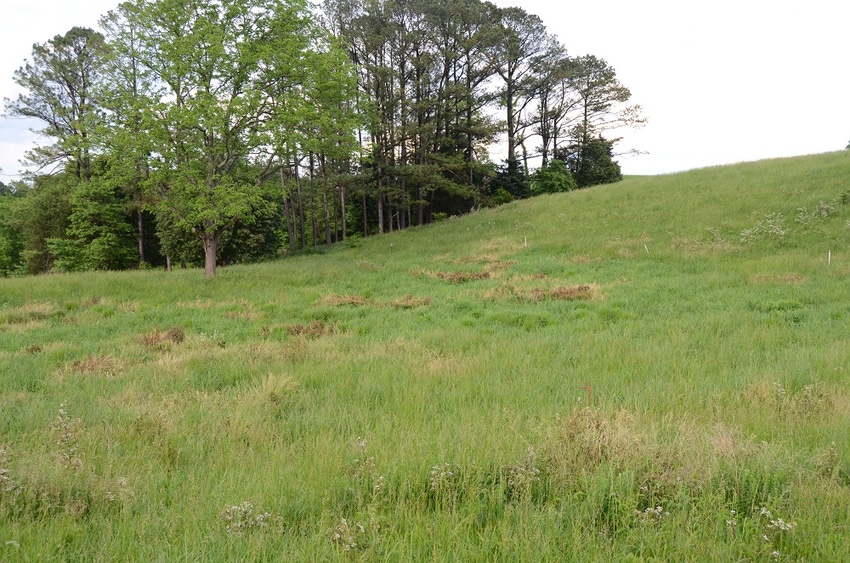
Much of the Midwest had plenty of moisture in 2016’s growing season. Two-hundred-bushel corn was quite common from what I’m being told. I have not heard lots of bragging concerning per-acre profits.
The Southeast was mostly a different story. Much of the country south of I-40 was 80% short on rain in April, May and most of June. Locally we got good moisture the last of June and had one wet week in July. August delivered almost 5 inches. Then came a dry fall with only 2.7 inches in the 91 days preceding Nov. 28, 2016. Fall forage growth, especially cool-season growth, was nonexistent on most pastures.
The most common response to a dry growing season is destocking. This year the market responded with cattle getting cheaper most every day following July 1. Locally in October there were reports of 6-year-old black cow-calf pairs bringing less than $900. Many of these included a bred-back cow.
Forced marketing is seldom pretty. It reminds me of 1996 when I was forced to sell 80 cows in a big mid-January snow storm due to a lost lease with a three, week notice. There were six people at the weekly sale. All the cattle were mine. It was ugly, real ugly.
Good leases are vital and so are animal health practices and drought proofing. Truth is that if we fail to remove drought from its usual malady we will pay dearly.
One of the cures is planned complete pasture recovery before re-grazing. It includes the allowance for plant growth that is often referred to as weeds. Most of these weeds are actually forbs, and many are very nutritious. High-density-grazed cattle (70,000 pounds per acre or more) consume a high percentage of most all the growth and most often out-perform cattle on “weed-free” pastures.
Many people are still recommending clipping and/or spraying pastures, applying fertilizer (mostly nitrogen), and stockpiling fall growth of cool-season grasses, mostly fescue. In 2016 this was planned suicide. It is past time for such ideas to cease. Such management is never much of a moneymaker, and will lose money in several years of most decades. It is almost comical to hear these experts describe a program of desertification and red ink. They talk about how ugly we are. Remember, the first sign of desertification is a decrease in plant diversity. Their definition of ugly needs to be changed.
In our area with 100% clay soil a standing, recovered pasture without weeds is not natural or healthy. The deep tap-rooted plants are a necessity for functional water and energy cycles, which are a key to moisture storage and utilization.
Deep roots condition the soil for depths of two to three feet. See Alan Newport’s article titled Animal Impact on Pasture on page 18 of January 2017 BEEF magazine. In his data, you'll note the published soil organic matter samples at soil horizon 6 -- each of these horizons is 6 inches, so horizon 6 is 36 inches -- are 300% higher where high-density grazing and completely recovered pastures were the norm. I visited this ranch on the Mississippi prairie in 2012 and 2015 in mid-July and early May of the respective years. The cattle were shining like new pennies in the midst of drought and again in the midst of waterlogging rains (Mid-July 2012, early May 2015). The cushion is plant diversity, and it includes weeds and brush with deep root systems.
The word “brambles” is not a normal part of my vocabulary, but blackberry and black-raspberry briers are constantly tearing at my shirt and britches. We normally do a severe thinning of this growth every two to three years. The grass behind and under the briers is the best we grow. The reason is that blackberries have 10 to 20 times as much root growth underground as growth above the ground. The key here is a severe thinning following two years growth. We do not declare war on the natural model. That would be suicide. However, we knock back (with severe cattle grazing and a little chemical) the brush and tweak the system. The result is more health and black ink.
My take-home message pertaining to brush and weeds is as follows:
Cattle health and optimal production requires huge plant diversity in our pastures.
Water, mineral, energy and biological activity requires huge plant diversity.
Soil growth requires huge plant diversity and huge biomass. Our job is to tweak, not declare war on the weeds and brush.
Complete plant recovery followed by high-density grazing is our major tool.
Yes, there are several poisonous plants out in our pastures. But the truth is that the poisonings occur when the cattle are hungry. The cattle are hungry when we make big mistakes. In my history, the big mistakes are the ones I make.
About the Author(s)
You May Also Like






